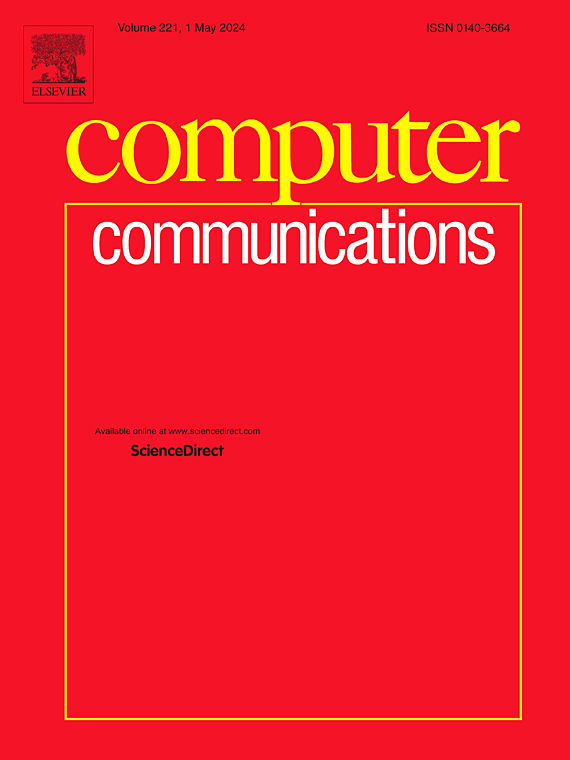用于医疗保健物联网的下一代云联盟:提高响应时间和能源效率
IF 4.5
3区 计算机科学
Q1 COMPUTER SCIENCE, INFORMATION SYSTEMS
引用次数: 0
摘要
物联网(IoT)与边缘计算的集成通过实现及时的患者监测和服务可用性,彻底改变了包括医疗保健在内的各个部门。这些服务包括紧急反应、定期治疗和医生协助。医疗保健系统利用移动边缘计算、雾计算和云计算来卸载数据和计算,并最大限度地减少延迟和能耗。但是,边缘计算解决方案存在区域覆盖受限、业务需求多样、计算能力不足等局限性,不适合大规模数据处理和计算。为了满足在不同医院的医生和专家之间无缝共享患者信息的日益增长的需求,资源共享解决方案(如cloudlet federation)是必不可少的。尽管如此,将物联网系统与云联盟集成到医疗保健中仍存在挑战,主要是因为除了传统云联盟典型的固定边缘节点和代理之外,还需要救护车等移动节点。本研究提出了一种改进的云联合模型,旨在通过有效地管理来自异构节点的数据来克服这些挑战。我们的方法提高了响应时间,减少了能源消耗,并确保了全面的患者信息的可用性。实验结果表明,与现有的基于云的解决方案相比,响应时间提高了49%,能耗降低了51%。本文章由计算机程序翻译,如有差异,请以英文原文为准。
Next-generation cloudlet federation for Internet of Things in healthcare: Enhancing response time and energy efficiency
The integration of the Internet of Things (IoT) with edge computing has revolutionized various sectors, including healthcare, by enabling timely patient monitoring and service availability. These services encompass emergency responses, regular treatment, and physician assistance. Healthcare systems leverage mobile edge computing, fog computing, and cloudlet computing to offload data and computations and minimize delays and energy consumption. However, edge computing solutions face limitations such as restricted area coverage, diverse service requirements, and insufficient computational power, making them unsuitable for large-scale data processing and computation. To address the growing need for seamless patient information sharing among doctors and specialists across different hospitals, a resource-sharing solution, such as the cloudlet federation, is essential. Nonetheless, integrating IoT systems with cloudlet federations in healthcare presents challenges, primarily because of the necessity for mobile nodes such as ambulances, in addition to the fixed-edge nodes and brokers typical of traditional cloudlet federations. This study proposes a modified cloudlet federation model designed to overcome these challenges by effectively managing data from heterogeneous nodes. Our approach enhanced response times, reduced energy consumption, and ensured the availability of comprehensive patient information. The experimental results demonstrate a 49% improvement in response time and a 51% reduction in energy consumption compared with existing cloud-based solutions.
求助全文
通过发布文献求助,成功后即可免费获取论文全文。
去求助
来源期刊

Computer Communications
工程技术-电信学
CiteScore
14.10
自引率
5.00%
发文量
397
审稿时长
66 days
期刊介绍:
Computer and Communications networks are key infrastructures of the information society with high socio-economic value as they contribute to the correct operations of many critical services (from healthcare to finance and transportation). Internet is the core of today''s computer-communication infrastructures. This has transformed the Internet, from a robust network for data transfer between computers, to a global, content-rich, communication and information system where contents are increasingly generated by the users, and distributed according to human social relations. Next-generation network technologies, architectures and protocols are therefore required to overcome the limitations of the legacy Internet and add new capabilities and services. The future Internet should be ubiquitous, secure, resilient, and closer to human communication paradigms.
Computer Communications is a peer-reviewed international journal that publishes high-quality scientific articles (both theory and practice) and survey papers covering all aspects of future computer communication networks (on all layers, except the physical layer), with a special attention to the evolution of the Internet architecture, protocols, services, and applications.
 求助内容:
求助内容: 应助结果提醒方式:
应助结果提醒方式:


